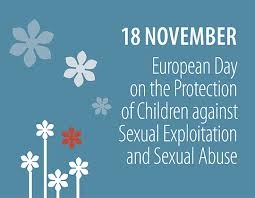COE: Experts Offer Tips on How to Protect Children from Sexual Risks Online
The Council of Europe has published a series of online video tutorials to help children safely browse the digital world and protect themselves from the risks of sexual nature that they encounter online, to mark November 18th, the European Day to Protect Children from Sexual Exploitation and Sexual Abuse.
Stressing the need to shed light upon and address the problem of sexual abuse and exploitation of children online, the Secretary General of the Council of Europe, Thorbjørn Jagland called upon everybody to take responsibility. “All of us – parents, teachers, communities, governments, – must ensure that technology and new media help children to explore, learn and develop, and not to fall prey to sexual exploitation and abuse,” he said.
The brochure and six tutorials that were published on November 17th, provide practical tips for parents on digital parental for various age groups — <8, 9-12, and 13-17 years old. The video tutorials explain the specific threats faced by children online and what to do if your child has fallen victim to one of them.
Sextortion (sexual coercion and extortion) is the situation when an offender uses self-generated images of the child for blackmail, in an attempt to extort sexual favours, money, or other benefits. This “webcam blackmailing” has increased considerably over the past few years, though it remains largely unreported by the young victims. “Do not share and do not pay anything; preserve evidence, take screenshots and do not delete anything,” are among the quick tips the CoE experts offer victims.
Sexting refers to the receiving and sending of sexually explicit messages, often via mobiles devices, leading to situations where a child loses control of the content, thereby becoming susceptible to blackmail, bullying, and other forms of manipulation.
Sex-chatting refers to the sharing of sexual mater between an adult and a child on social media, chatrooms, and gaming platforms, and is often the first step towards grooming children for child pornography. Research has shown that in online online chatrooms, paedophiles engage in sexual conversations with children within two minutes. Preventing children from adding strangers as “friends” on social media, critically assessing the information they share, and keeping a close eye on their behavior, can help minimize risk.
Grooming offenders operate by establishing an emotional connection with the child and subsequently attempting to exploit their young victims by persuading them to partake in sexual activity online, or meet them in the real world and subject the child to sexual trafficking or violence. The signs that should alert parents to the risk of their child being groomed online include: using sexual language that you wouldn’t expect them to know, being secretive when using ‘screens’, and using gadgets and gifts that you did not give them.
Revenge porn is the non-consensual sharing of sexual images; a risk children run into after ending a relationship. “Dont share and immediately delete the received images”; “preserve the evidence and report it to the police”; “never take sexually explicit pictures of anyone”; are all examples of what parents should tell their children to prevent them from becoming a victim of revenge porn; what they should do should they receive sexually explicit pictures of another child; if they create sexually explicit material and share it online. These can all prevent children from being subjected to deep traumatising situations.
In June 2017, the Council of Europe launched a new monitoring round among the 42 state-parties to the Lanzarote Convention, that focuses on the protection of children against sexual exploitation and abuse facilitated by information and communication technologies. The responses of the Parts and comments of civil society organizations will be examined in 2018-2019, and a detailed report on the situation shall be prepared.
By Máté Földi












